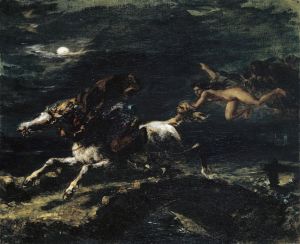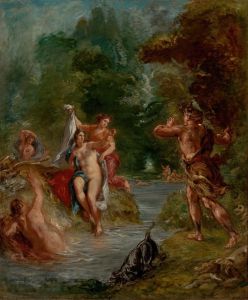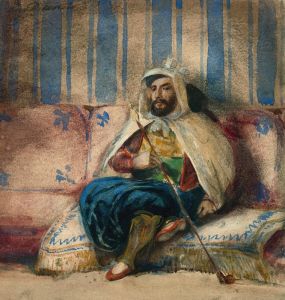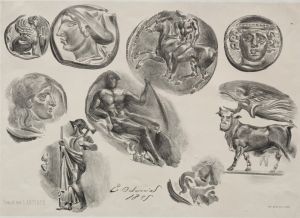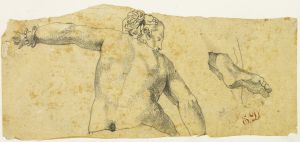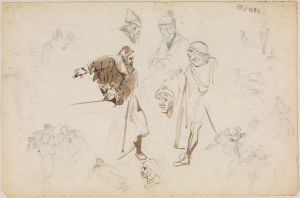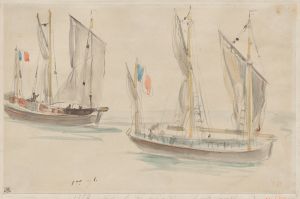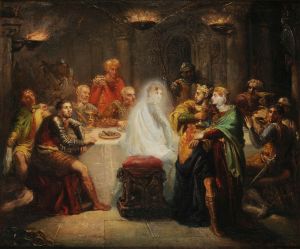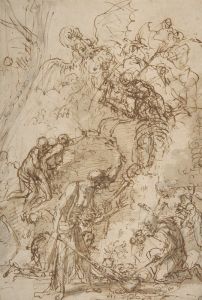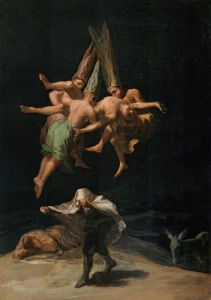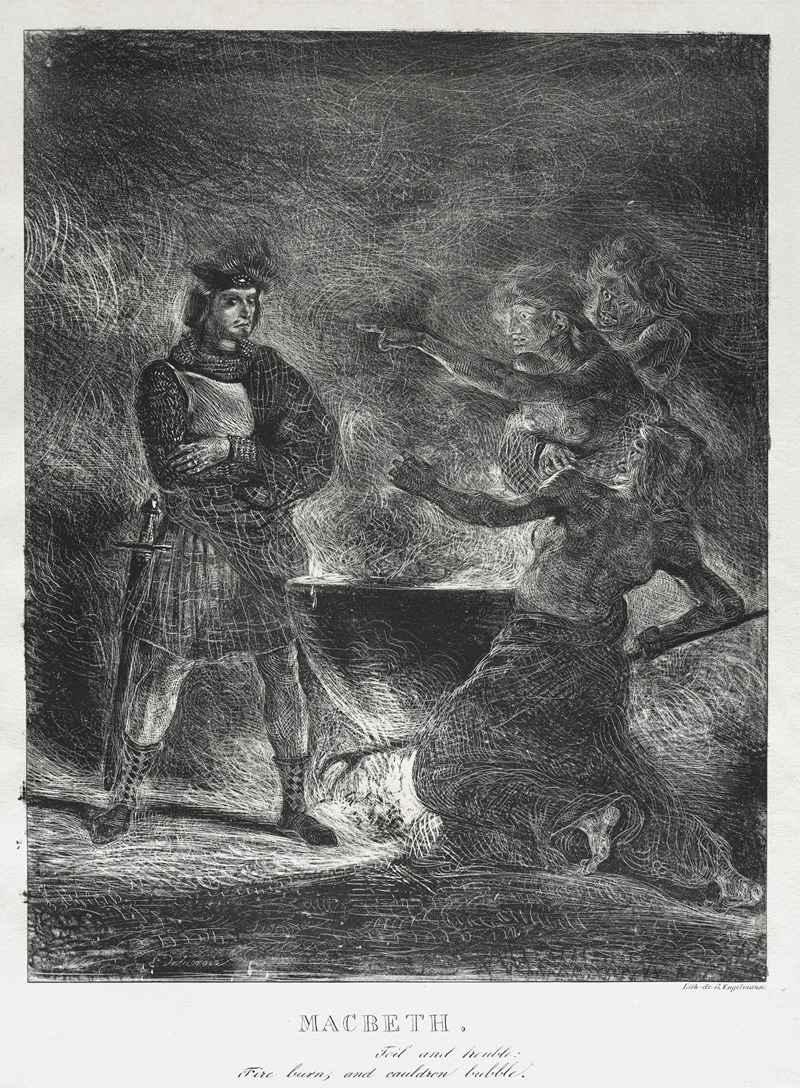
Macbeth Consulting the Witches
A hand-painted replica of Eugène Delacroix’s masterpiece Macbeth Consulting the Witches, meticulously crafted by professional artists to capture the true essence of the original. Each piece is created with museum-quality canvas and rare mineral pigments, carefully painted by experienced artists with delicate brushstrokes and rich, layered colors to perfectly recreate the texture of the original artwork. Unlike machine-printed reproductions, this hand-painted version brings the painting to life, infused with the artist’s emotions and skill in every stroke. Whether for personal collection or home decoration, it instantly elevates the artistic atmosphere of any space.
"Macbeth Consulting the Witches" is a painting by the renowned French Romantic artist Eugène Delacroix. Created in 1825, this work is one of Delacroix's many pieces inspired by literary sources, specifically the plays of William Shakespeare. The painting illustrates a scene from Shakespeare's tragedy "Macbeth," where the titular character, Macbeth, encounters the three witches who prophesize his rise to power and subsequent downfall.
Eugène Delacroix (1798-1863) was a leading figure in the Romantic movement, known for his expressive brushstrokes, vibrant color palette, and dramatic compositions. His works often drew upon historical, literary, and exotic themes, reflecting the Romantic era's fascination with emotion, nature, and the sublime.
In "Macbeth Consulting the Witches," Delacroix captures the eerie and foreboding atmosphere of the scene. The painting depicts Macbeth, the ambitious Scottish general, standing before the three witches who deliver their cryptic prophecies. The witches, often referred to as the Weird Sisters, are portrayed as mysterious and otherworldly figures, shrouded in dark, flowing garments. Their presence is both ominous and mesmerizing, embodying the supernatural elements that are central to the play's narrative.
Delacroix's use of color and light in this painting enhances the sense of drama and tension. The dark, moody background contrasts sharply with the illuminated figures of Macbeth and the witches, drawing the viewer's attention to the central interaction. The artist's dynamic brushwork and attention to detail bring the characters to life, conveying their emotions and the gravity of the moment.
The painting is notable for its composition, which effectively conveys the psychological intensity of the scene. Macbeth's posture and expression suggest a mix of curiosity, fear, and determination as he listens to the witches' prophecies. The witches, on the other hand, exude an air of malevolent confidence, their gestures and expressions hinting at their control over Macbeth's fate.
"Macbeth Consulting the Witches" reflects Delacroix's admiration for Shakespeare and his ability to translate the playwright's complex characters and themes into visual art. The painting is a testament to Delacroix's skill in capturing the essence of literary works and his contribution to the Romantic movement's emphasis on emotion and imagination.
This painting is part of a larger body of work by Delacroix that explores themes from Shakespeare's plays. His fascination with the Bard's work is evident in other pieces such as "Hamlet and Horatio in the Graveyard" and "The Death of Ophelia." Delacroix's Shakespearean paintings are celebrated for their ability to convey the dramatic and emotional depth of the original texts.
"Macbeth Consulting the Witches" is housed in the Musée du Louvre in Paris, where it continues to be admired by art enthusiasts and scholars alike. The painting remains an important example of Delacroix's artistic legacy and his contribution to the Romantic movement in 19th-century art.






